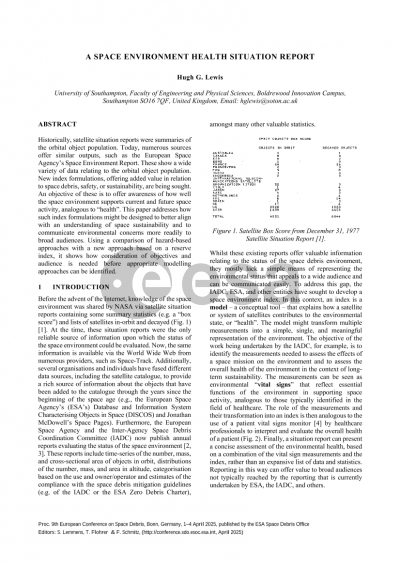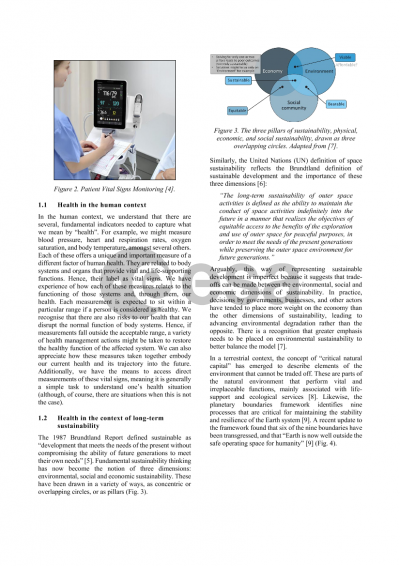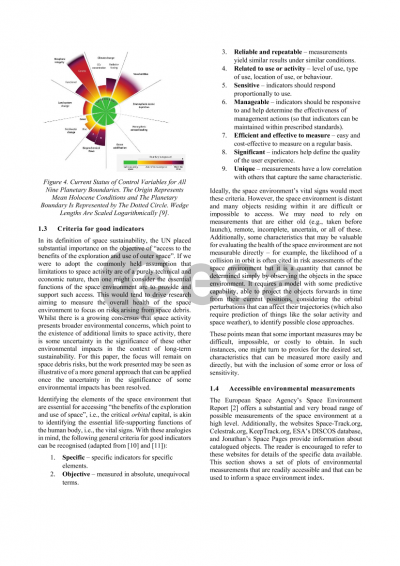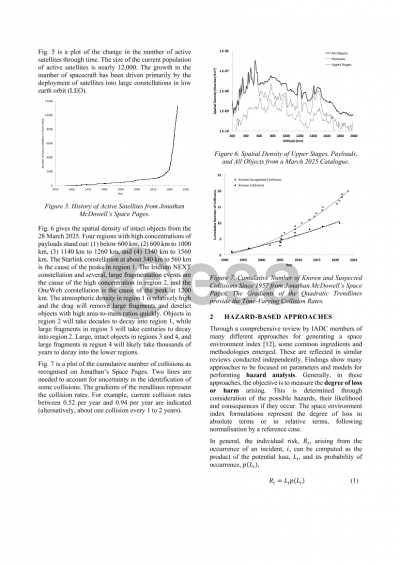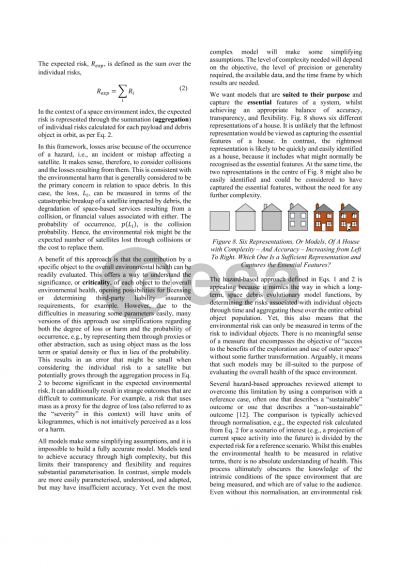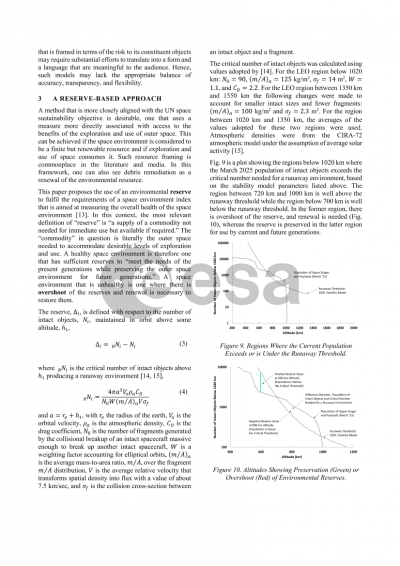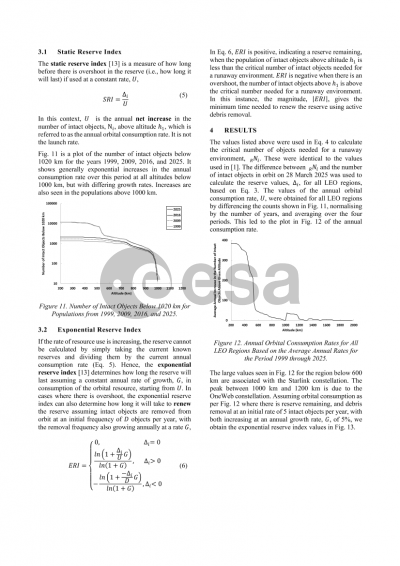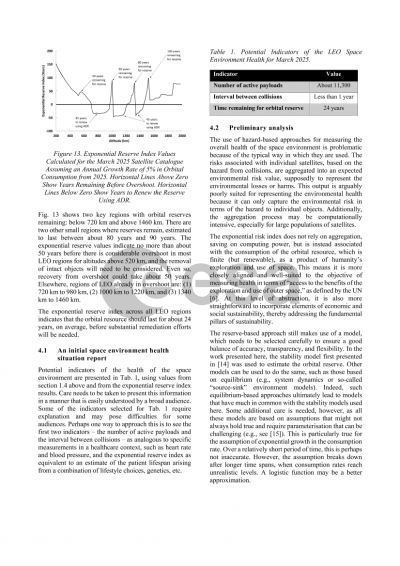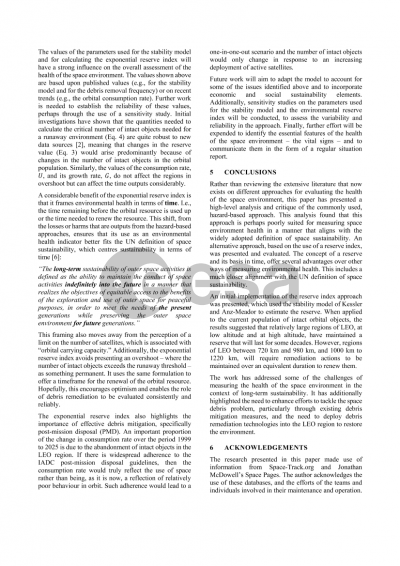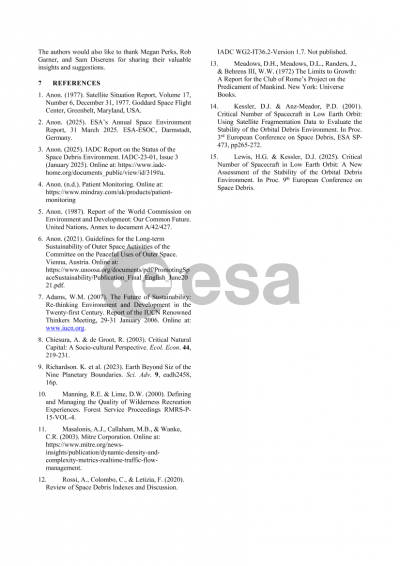Document details
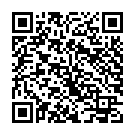
Abstract
In the early years of spaceflight, satellite situation reports were summaries that provided an awareness of the prevailing orbital object population. Today, numerous sources offer similar and regularly-updated outputs via the Internet – some in near real-time. These frequently present population counts distributed by time, altitude, ownership, use, and mass, or statistics related to these. For example, the European Space Agency provides a short summary of “space debris by the numbers” and a detailed assessment via its annual Space Environment Report. Beyond these immediate outputs, metrics that offer added benefit or insight in relation to space debris, safety, sustainability, or other considerations are now being sought. One of the objectives of such metrics is to offer an awareness of how well the space environment supports the current and future use and exploration of space. They are analogous to measurements of “health” or “wellness” and offer a situational perspective that can be more readily used in policy or regulatory instruments or for communicating with broad audiences. This paper reviews state-of-the-art approaches, introduces new metrics, and evaluates them based on their accuracy, transparency and flexibility in communicating the health of the space environment, as well as their computational and data requirements. Existing and new metrics considered in the paper include those based on growth models (e.g., growth rate, doubling time and time to reach equilibrium), resource use (e.g., reserve index and planetary boundaries), stability models (e.g., critical number of intact objects), and user impacts (e.g., collision avoidance manoeuvre rates, launch window gaps, and night sky brightening) amongst others. Finally, a selection of the most effective metrics is presented in the form of a situation report describing the current health of the space environment.
Preview
